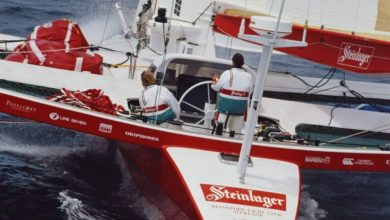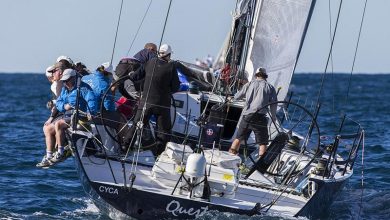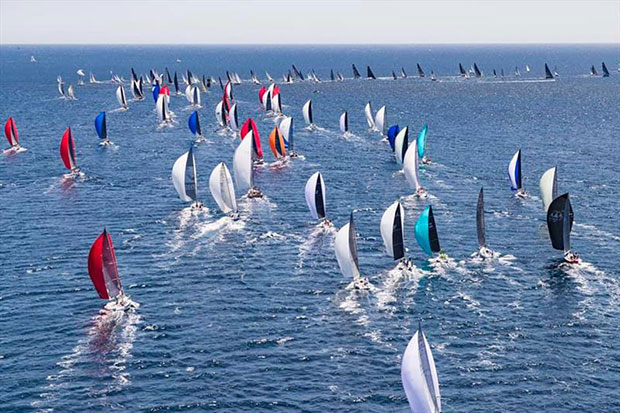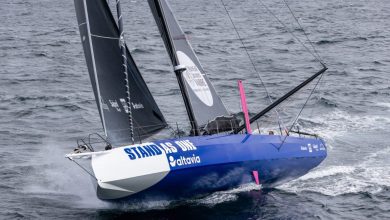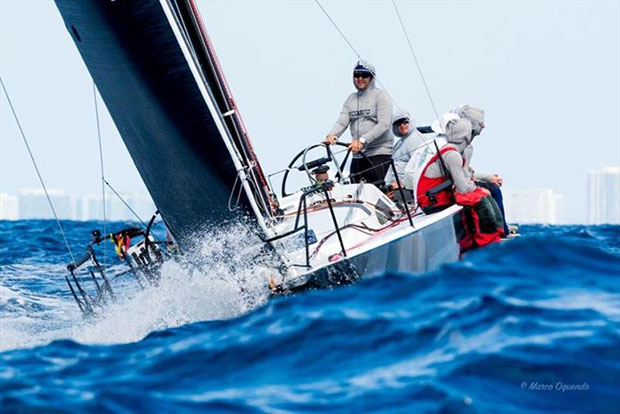The Ocean Race

The Ocean Race – Part 2: Twenty teams registered in VO65 and IMOCA60 divisions
Three weeks ago, at the end of February, Sail-World.com’s NZ Editor, Richard Gladwell, spoke with Richard Mason, Race Director and Peter Rusch, PR Director, of The Ocean Race for a general update on the race, which is scheduled to start from Alicante, Spain in October of 2021.
At the time of the interview, the sporting landscape had not been upended by the governmental ordered lockdowns, reacting to the COVID-19 pandemic, and the context of the questions and answers were different from today’s situation. By the time of the race start, in 18 months time, the current situation will have been resolved and life will have been reset to something approaching normal. Here’s Part 2 of a series looking at all aspects of The Ocean Race, here Mason explains the two fleets, how the teams can be put together, and charter boats. For Part 1 “Which side of the Big Island”
In 2023 the sailing world will celebrate 50 years of round the world racing, beginning with the 1973 Whitbread Round the World Race – which began as a very egalitarian adventure event with 19 entries, and peaking to 29 boats two editions later.
Two divisions have been announced for the 2021/22 race, now The Ocean Race. There’s a total of 18 teams registered on The Ocean Race website, paying an initial registration fee. But they are not yet fully-formed entries who have paid the full entry fee.
“The process we have at the moment for getting into the Race is that once we have teams who we believe are serious players, we invite them to register, which has a fee of €5000, and that does give them a seat at the table,” explains Mason.
“We get hundreds of teams that enquire, to whom we send out the basic information.”
“For the registered teams, we do a lot of work with them. We send a lot of commercial material. We support them with presentations, we go to an event and support their presentations – and will go to pitches with different partners to help when requested.”
“We are also working with the registered teams on developing a boatyard model for the next race. We’ll go through the race course and other items like required safety equipment – and get the feedback from the right people around the table – so we are shaping the race with the people who will actually be there.”
Although there are 18 teams registered on the race site – eight 65’s and ten IMOCA60’s, Mason says there are over 20 teams who have paid the E5000 fee – the two additional teams have asked not be listed for confidentiality reasons.
“There are 13 IMOCA60 teams registered. We are working with other teams on the fringes, who aren’t registered yet, but they have a high chance of being successful with signing the sponsorship they require.”
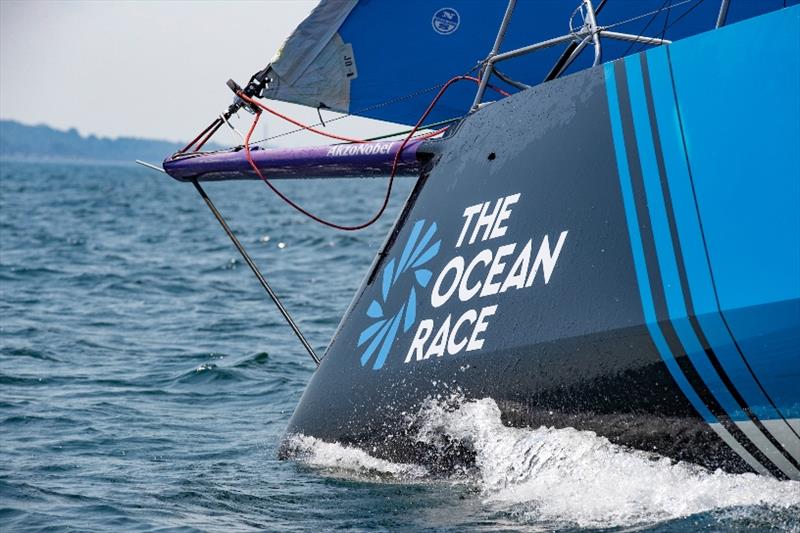 The Ocean Race European Tour corporate sailing event in Kiel, Germany, June 19. © Ainhoa Sanchez / The Ocean Race
The Ocean Race European Tour corporate sailing event in Kiel, Germany, June 19. © Ainhoa Sanchez / The Ocean RaceWhile this appears to be whistling in the wind, given the current commercial environment, there is a compelling argument that in a recession, a company should be spending more on its marketing, and in new initiatives, rather than less.
“We feel we have a good number of teams in the pipeline, and they are the right people who are out there looking for money,” Mason adds.
With the race set down for a start in September 2021, he says that the timelines are getting tight for new builds – and the next 12 weeks are reasonably crucial, before time runs out.
“We have two teams in new builds at the moment and we are close to getting a deal on the third – and the possibility of that boat not happening is very low, because of agreements that are tied to the Race.”
Mason says there are potentially a couple more new builds – but those are a longer shot commercially.
One of the key reasons for choosing the IMOCA60 as a second option for Race teams is that the boats can also be chartered from the existing world fleet and adapted from short-handed sailing to fully crewed events. Nine new, foiling IMOCAs have been launched over the past year.
Mason says that reliability is another gain with a charter boat after having done a previous singlehanded round the world race, of about three months duration plus work-up. Enough to get the kinks worked out of a new build.
“There are 30 suitable IMOCA’s in the world fleet and you’d be very competitive in at least 12 of those,” he claims. “We are still expecting to see a good number on the start line,” he adds.

The Ocean Race: The Mirpuri Foundation – an already announced VO65 entry in The Ocean Race – photo © Jonno Turner
Charters a strong option in IMOCA60
The Notice of Race requires that all the IMOCA60’s have to be foilers. But Mason is quick to point out that older boats can be competitive pointing out the retrofit and upgrade Sam Davies (GBR/FRA) has done with a 10-year old IMOCA 60 boat to convert to a competitive foiler.
“I expect we will have a bit of a spread in this race, with three or four new boats, and four or five top boats out of the Vendee Globe – that have been chartered. And then there will be those who are sticking their toe in the water, to build up for the next edition.”
Sailing a previously raced boat in The Ocean Race helps meet sustainable objectives around the use of existing gear.
“Under the sustainable business model we want our teams to keep going after our race, ” Mason notes. “So maybe scale the team down a bit and have them come back to the TJV or Route du Rhum the following year. And then it is not too difficult for them to become like a French team and roll on from one year to the other.”
“That way they are writing off the cost of a new build over four years, instead of just one race. We’re trying to get there, but it’s not going to happen overnight. It’s a big change of mindset for the teams who normally form to do The Ocean Race.”
“We are trying to merge two worlds together – with a few growing pains along the way,” he adds, accepting that the process of change has to be done if the event has a medium to long-term future.
“People forget that there were nine new IMOCA boats launched last year for the Vendee Globe – which are all up for charter,” Mason says illustrating the point of multi-event use. “Every French team is happy to charter those boats out for our Race, and want to sell their performance packages.”
“Right now if I were putting together a team, I would be seriously considering whether to build a new boat, or go and pick up a boat from one of the French teams, and get all their performance data while the boats are going around the world in the Vendee Globe.

Transatlantic Day 12. 11th Hour Racing Team (entry in The Ocean Race 2021-22) deliver their IMOCA 60 from Brazil to France with The Ocean Race crew configuration after finishing the Transat Jacques Vabre in November 2019. – photo © Amory Ross / 11th Hour Racing
“You would have to sail every day for six months to get even close to the same data set, and start working that up,” he says emphasising that there are trade-offs of boat performance from refined design thinking versus reliability from a proven boat.
“There is some work to be done to fit the boats out for crewed racing – you’d have all that pre-planned – and then work with the French team to coach-up your team for six months leading to the start of the Race. You’d be a very strong team with that approach, and more than offsetting any design gains that may have been made in the interim.”
“That is what we based our decision to move to the IMOCA class. It is the absolute core of the future of The Ocean Race. We want to be able to offer a deal to teams to do more than just our race.”
“In the IMOCA60 we have a class of boat that can do the Vendee Globe, The Ocean Race, the Transat Jacque Vabre, and the TransAts. These boats can be used for all of these events.”
Mason says it costs about 6-million euros to put an IMOCA60 into the water – with about 40,000 man-hours in the build. Expected re-sell price is around 3-million euros, or they can be chartered to other teams. “If you use the charter model, you’re not talking about crazy numbers to participate in this race. The costs would be half that of building a new boat.”
He quotes the example of young sailor who can raise the budget for the single-handed Vendee Globe.
“That option isn’t going to cost as much as The Ocean Race – but then you aren’t getting anywhere near the same returns. But it could be a good entry-level option for a commercial partner. Or a TJV which will costs hundreds of thousands of Euros rather than millions.”
by Richard Gladwell/Sail-World.com/nz

